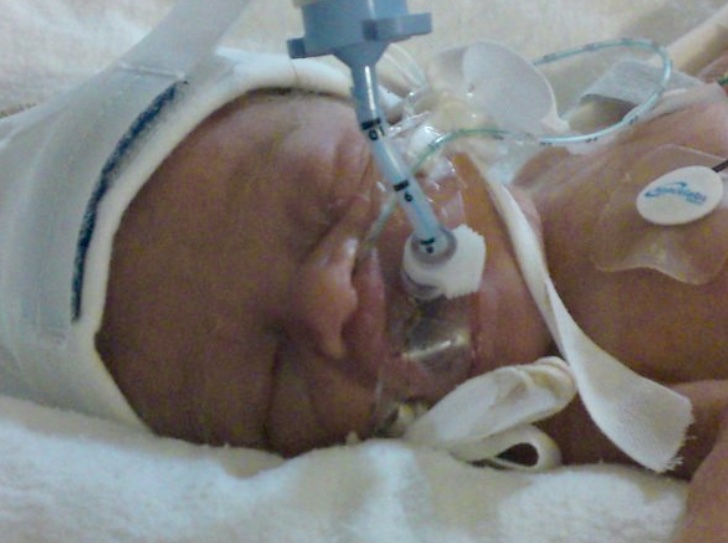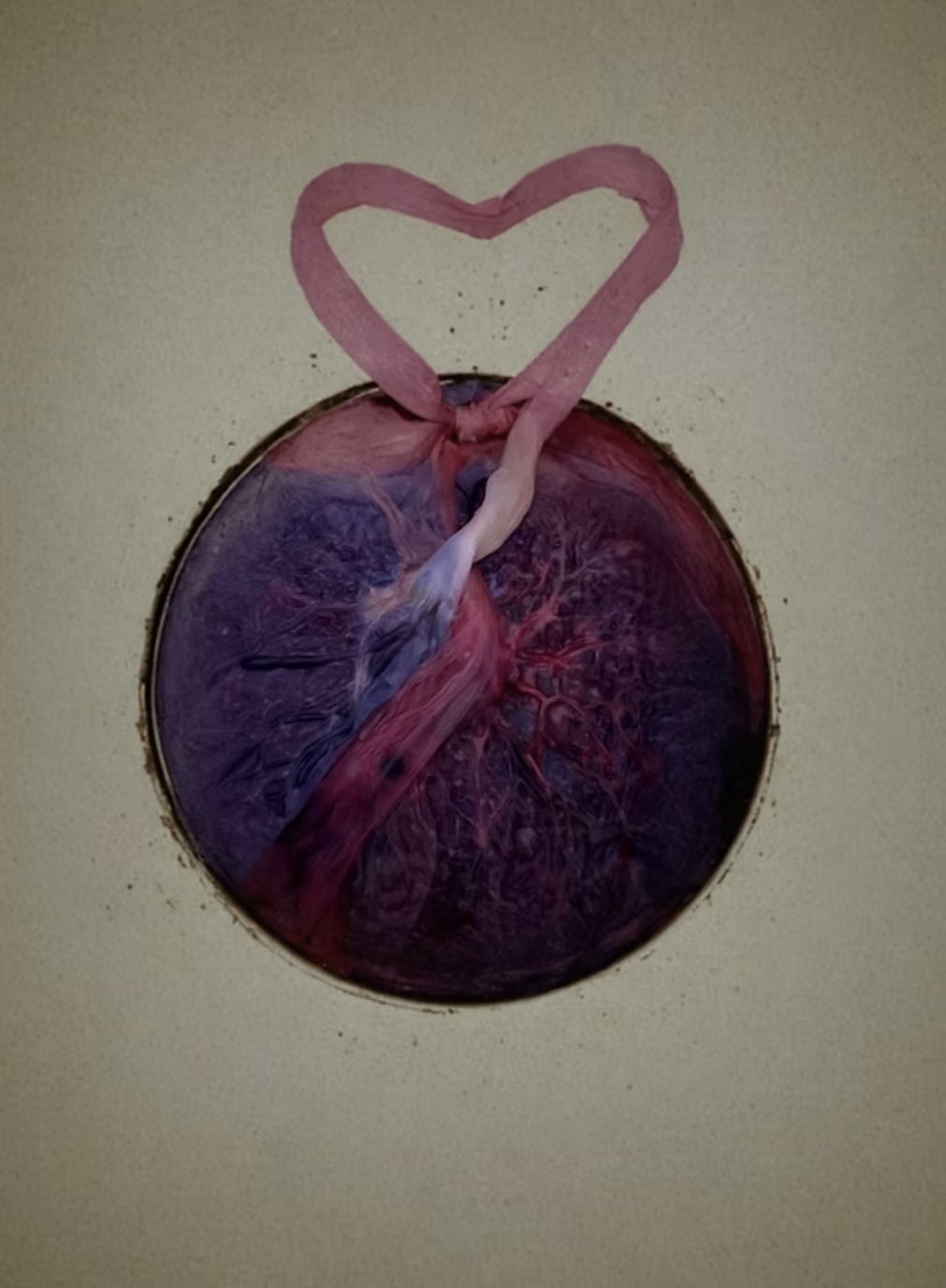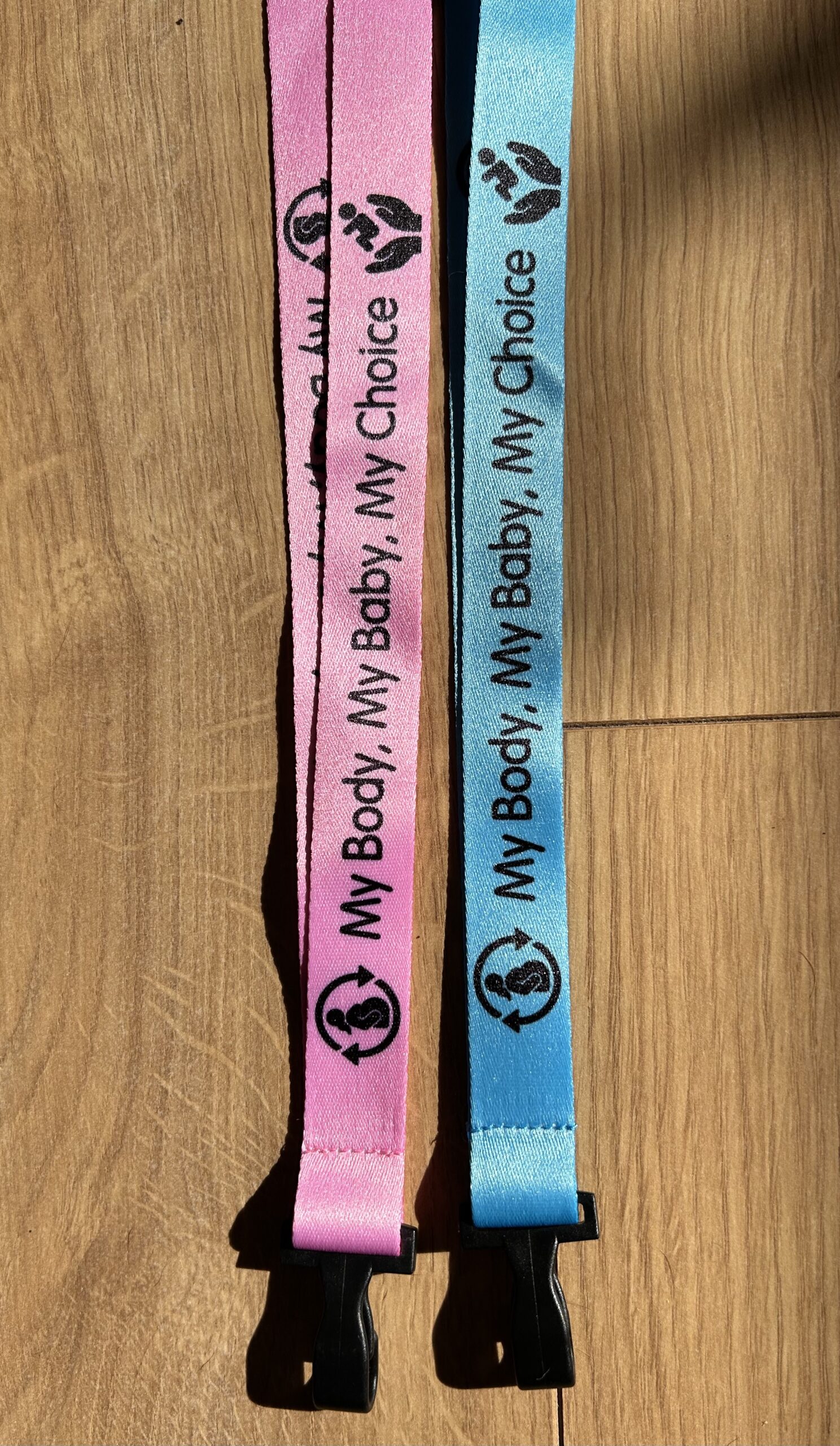Speak Now or Forever hold the Pieces - 'The Reality of working in the NHS, from the Midwives they tried to Silence'
Elite Members Blog

Part One: Settling for less
As we walked through the maternity unit all seemed quiet. We shook our heads in disapproval, at the rather dreary attempt of normalising the clinical birth room, with cheap battery-operated lights.
When down the corridor comes the rhymical sound of a woman’s breath, steady but notedly filled with excited anticipation of birth. Following her closely, almost appearing to stand to attention, are her supportive convoy. They hobble behind, seemingly half carrying and half dragging the huge hospital birth bags behind them. They nervously decline any attempts from the team to help them with their bags, likely holding on to the task allocated to them, by the soon to be mother. The fleeting questioning thought enters our minds…do they really have understand of what will unfold behind the paper curtains of this birth room?
As the door closes, the world outside seems distant, muffled by the heavy-duty doors that seem to separate life’s everyday noise, from what should be a sacred space for birth.
As a Midwife, we come to understand that birth is never just a physical act alone; it is an inbuilt and profound dance between the body, spirit, and earth itself. Even when Obstetric intervention is required to ‘save lives’, the harmony and trust that should be the dominant factor within the room, should ooze from the patch work painted walls. Compassionate & clear like the dominant beat of a bass drum… sadly it is inconsistent and always based upon the full team that is on shift.
On every labour ward, we are more than witnesses, we are in sacred positions to guide, protect, and sometimes, be the silent participants in natures miracle, exactly as it unfolds.
Fifteen years ago, the air seemed thick with the weight of the autonomous history – the hands of skilled women and men, passing down knowledge through generations, working in unison with nature itself to welcome new life into the world. Today, this seems tainted, appearing like a distant memory. Overwhelmed by dictators within senior management, marching around corrupt, uncaring, and unwaveringly utilising the tick box model of midwifery. Perhaps more worryingly, coercing vulnerable workers into their clićhe. The sharp bristle brooms these senior midwives and managers hand over to shiny new midwives, keen to make a difference, with the expectation that they will join the effort to brush failings under the carpet.
More recently it seems like an unrecognisable profession, built with LEGO block clinicians, who would rather step on each other to get to the top, than focus on improving care to keep women, people and families safe. Focusing on a banding and titles than development, reflection or improvement in care.
Perhaps it would be more poignant to pause here, and start from the beginning, before the Bullying by a Trust within the South East of England began…..
When we first entered the world of Midwifery, our hearts brimmed with overwhelming optimism. The mere idea of ushering new life into the world seemed to promise continuous joy, hope, and fulfilment. We envisioned ourselves guiding women, pregnant people and families through the most transformative moment of their lives, a single second filled with beauty and promise. The captivating scent of new beginnings, the miracle of life—birth seemed to be a perpetual bloom, untouched by the inevitable thorns that accompany it. We did not see ourselves as observers of pain, risk, or loss—only as agents of hope and safety. So how has this common goal steered so off course? The wrong people, in the wrong place, at the wrong time.
The large portion of clinicians we have had the pleasure of working with, have been passionate, kind, knowledgeable and caring. Sadly, the few ‘bad apples’ make it their mission to interfere in matters they have little or no experience in, whilst singling out staff they can intimidate. How can you build a trustful staff & patient relationship, if the lead midwives sit on health roster rather than joining the ward rounds? Members of the multidisciplinary refusing to undertake safety huddles as they feel they don’t need too, even when presented with the evidence that it improves safety. The echoing mumbles from labour ward co-ordinators, ‘we don’t get it wrong, we don’t need to change…’ Sadly, the increasing numbers of Intensive Care admissions for Mothers, and ever increasing transfers out for intubated neonates, conflicts with these mumblings.

‘Part Two: Reality Check – The Duality of Birth & Midwifery
As the years went on, our perspectives began to shift. We started to witness a recurring divide within the midwifery community itself —a dichotomy between the ever-optimistic and the often-cynical.
On one side, there are those who view childbirth as a ‘rose,’ a constant symbol of beauty and grace, their eyes only ever focused on the bloom, while the thorns of pain, complication, and risk are brushed aside.
On the opposite side, the pessimists, hardened by experience, find themselves consumed by the thorns—the complications, the dangers, the uncertainties—often overlooking the quiet beauty of the process itself.
In both, there seems to be little middle ground, with little acceptance for those who can see the balance of both, the ever-present beauty but the genuine need for intervention to protect and save lives.
The professional politics urging clinicians to pick a ‘camp’, with a smothering view that you are either with ‘us’ or against ‘us’. A vast cry away from Midwifery; the practice of ‘being, supporting and assisting women and childbirth. True collaboration across Midwifery, Obstetrics & Neonatology requires an understanding of scope of practice, roles and indeed the respectful appreciation that we are all accountable, responsible and important in ensuring a safe and positive outcome.
Currently to keep women and babies safe, you have to have a voice, be strong enough to stand against the adversity of the clićhe, whilst never forgetting why you commenced this caring profession in the first place. With urgency and distress in our voices, we ask, how many more staff will be bullied out of healthcare?

Part Three: The Naked Truth
So without meaning to sound like we are repeating the same recurring lessons, overly underlines from the copious maternity reports. It is and still remains important for us to lay it out for all to see, offering the clarity, transparency and honesty that staff, women, pregnant people and families deserve.
No clinician should have received the threats, deformation, abuse, harassment and awful bullying we have faced. Just like the Beverly Clock in New Zealand, that continues to run despite never being manually wound since 1864, we will not be silenced in utilising every breath to keep mothers & babies safe. PATIENT SAFETY should & needs to be a PRIORITY for every health care professional.
-
Allowing multiple babies to be dropped is not okay!
-
Causing birth trauma, skull fractures & internal bleeding from mismanaged instrumental deliveries is not okay!
-
Mismanaging recurrent Pre-Eclamptic patients, leading to Intensive care admissions, maternal deaths and neonatal deaths is not okay!
-
Not gaining Consent for Caeserean sections or a Hysterectomy is not okay!
-
Recurrent issue of missed basic observations for mothers and babies is not okay!
-
Labour Ward Co-ordinators (or ‘Matrons’ as they refer to themselves) are under skilled and over confident, with an obnoxious opinion that they don’t need to escalate, be accountable or put the correct Emergency call out is not okay!
-
Clinicians unable to interpret a fetal heart monitoring is not okay!
-
When senior midwives tell staff to not answer patient buzzers, including one of their own critically ill colleagues, is not okay!
-
Refusing to action, learn and improve is NOT OKAY!

PART FOUR: THE BALANCE
The Science – Fertilisation to Birth
For many, pregnancy begins with a simple yet profound biological event—the union of a sperm and an egg. This seemingly straightforward act of fertilization, occurring within the delicate confines of a woman’s uterine tube, marks the beginning of a complex and awe-inspiring process. The single-cell zygote formed by this harmonious union carries the full genetic code for a future unique human being.
Within the profession and life itself, we have gained an overwhelming appreciation that for many, this is not as ‘simple’ as described in physiology books. Fertility can be affected by many external and internal factors that can prevent the creation of life itself. With advancements in fertility treatments, the basis of life itself can begin outside the body, providing an opportunity otherwise unattainable to many.
Over the course of approximately nine months, regardless of the mode and mechanism of fertilisation, this tiny cell divides, differentiates, and grows in the protected environment of the mother’s uterus. During this time, life unfurls from the most elemental beginnings—genetic material encoded in the zygote—into a fully formed, distinct individual.
The Complex Reality of Human Life
While the science is clear, the philosophical and ethical questions surrounding the beginning of human life remain a source of contention for humanity. Many in the professional field believe that the zygote—once formed—represents the potential for a new human life. But at what point does that potential become ‘real’ life, deserving of the same moral and ethical consideration as a child already born? This question is not merely academic; it shapes how every single clinician, woman, person, family, and onlooker both view and approach birth.
As clinicians, it can silently influence how we advocate for the rights of mothers and newborns, as well as how we understand the sanctity of life at its very beginning.
Finding Balance Between the Rose and the Thorns
Perhaps the truth lies not in an either-or perspective but in the distinct need to embrace both the rose and the thorns. As midwives, we’ve made the choice to hold both the beauty and the challenges of birth in our hearts. The optimism that drew us into this profession is still there but tempered with a deeper understanding of its complexities and realities.
Birth, like life itself, is neither entirely beautiful nor entirely painful—it is a mixture of both, each moment carrying with it the potential for joy, sorrow, and every emotion in between.
The Moral Challenges – Navigating Complex Ethical Decisions
Midwifery, as a profession, is centered around providing care and support to women and people during pregnancy, childbirth, and the postpartum period. Midwives should play a vital role in ensuring the well-being and safety of both mothers and babies.
However, like many healthcare professionals, midwives are often faced with difficult moral and ethical challenges. The nature of these challenges is deeply intertwined with cultural, religious, personal, and professional beliefs, making midwifery a profession that demands not only technical skills but also strong ethical reasoning and emotional resilience.
S

PART FIVE: THE DILEMMA
The Moral Challenges – Navigating Complex Ethical Decisions
Midwifery, as a profession, is centered around providing care and support to women and people during pregnancy, childbirth, and the postpartum period. Midwives should play a vital role in ensuring the well-being and safety of both mothers and babies.
However, like many healthcare professionals, midwives are often faced with difficult moral and ethical challenges. The nature of these challenges is deeply intertwined with cultural, religious, personal, and professional beliefs, making midwifery a profession that demands not only technical skills but also strong ethical reasoning and emotional resilience.
A core principle of ethical healthcare is having true respect for a woman and pregnant persons autonomy. This means that patients should always have the right to make informed decisions about their care, with an understanding that people are allowed to make what some may feel are ‘unwise’ decisions. For midwives, this can be especially complicated during pregnancy and childbirth and involves providing all the relevant information about the potential risks and benefits of certain medical interventions.
Informed consent vs Patient autonomy
Challenges arise when a woman or pregnant persons decision conflicts with what medical advice or recommendation is considered ‘best practice’. An example of this may include opting for a home birth despite medical complexities and recommended advice to birth in a hospital setting due to these risks. We must respect the woman’s and pregnant persons decision, even if it goes against medical advice. A morally challenging occurrence that requires an understanding and balance for respecting their autonomy, whilst articulating the potential risks to the mother and her baby’s health.
Perhaps a greater understanding that many clinicians have experienced when choices against guidance have ended with catastrophic outcomes. Free births that have resulted in neonatal deaths, Vaginal Births after previous Caesarean sections that have resulted in maternal and neonatal birth trauma and death. It is however imperative that clinicians try to contextualise that these outcomes will not occur for ‘every’ woman or pregnant person. If communication and correct guidance is provided (and documented) then an appreciation that If a mother is deemed to have ‘capacity’ for decision making, it is indeed their ‘Body, their Baby, their Choice’.
Cultural Sensitivity vs Medical standards
Working within a diverse population of women and pregnant people, it is important to understand that we all have various cultural backgrounds, where each culture has its own beliefs about pregnancy, childbirth, and maternal care. In some cultures, certain practices, including not seeking medical intervention during childbirth, may conflict with what clinicians are trained to consider best practice. It is therefore important to explain clearly, caringly and kindly, whilst ensuring actions and care is not provided without consent. Sadly the rate of abuse and lack of consent in some of the trusts we have worked at is overwhelmingly high.
Facing a dilemma if a woman or pregnant person insists on following traditional practices that could compromise her safety or the safety of her baby is challenging. It requires carefully navigating cultural sensitivity while advocating for recommended medical standards. Open communication, education, and building trust, all while respecting the woman’s cultural preferences is imperative and really should occur in 100% of these situations.
Confronting the potential for stillbirth or neonatal death
One of the most heart-wrenching moral challenges that we have witnessed in midwifery is facing the potential for stillbirth or neonatal death. We can work with what would be classified as a ‘high-risk pregnancy’, there is a looming fear that things may not go as planned. It’s not just the medical side that is challenging – there are deep emotional and ethical questions that come into play for each clinician on a moral and ethical level. It is also important to acknowledge that some stillbirths and neonatal deaths occur in those considered ‘low-risk’. The take home message is that re-risk assessing should occur at every interaction and every contact. Too many cases have resulted in loss due to mismanagement by clinicians either ‘under managing’ or indeed ‘over managing’ care.
So how much should a midwife intervene during labour? How do we realistically balance respecting the natural and physiological process of birth with the urgency of deterioration and potential of medical complications due to the complex health needs of our population?
These questions weigh heavily on a health clinicians conscience and how do we ensure that critical decisions in the ‘heat of the moment’, continue to be emotionally supportive to the woman or parents who are experiencing the potential risk, deviation of birth plan and perhaps the loss of a child.

PART SIX: SCOPE OF PRACTICE
The role of technology in childbirth
Reviewing history and the increasing use of technology in childbirth – such as advancements in continuous fetal monitoring, electronic health records, and even the use of robotics in complicated deliveries – can present overwhelming ethical concerns. Technology can indeed enhance the safety and well-being of both mother and baby, however it also introduces new questions about how much intervention is too much?
Facing the dilemma of knowing when to embrace technology and when to resist it, seems to be a challenge decided by many who are not within the clinical environment. A woman may request a ‘natural or physiological birth’, but technology might indicate that complications or deviations in safety require a recommendation of medical intervention. Respecting these wishes while making sure the best outcome is ensured, upholding her safety and the safety of her baby is a challenge. Striking a balance between embracing technological advancements and respecting a woman or pregnant persons preferences for natural birth is a complex ethical matter, that is an ever changing see-saw.
Professional roles & relationships
Midwives often work as part of a team that includes Obstetricians, Anaesthetists, Neonatologists, and other healthcare professionals. A kind and respectful collaboration is crucial to ensure positive outcomes. These team members may have conflicting views on what should be the best course of action for a pregnant woman or person. Feeling torn between respecting the medical opinions of the rest of the team and advocating for the preferences of the woman or person in their care. This is where essential team building and respecting the knowledge and expertise of each specialist is crucial to avoid conflict. Professional tensions can be especially difficult in high-stakes situations where decisions need to be made quickly, balancing roles as advocates for the woman or pregnant persons choice, with the overarching responsibility to provide the best and safest medical care in collaboration with other healthcare providers.
Midwifery is not about delivering babies. It begins with supporting a mother to birth her baby whilst providing compassionate, ethical care at one of the most vulnerable times in their lives. We face a wide range of moral challenges that require a delicate balance of professional knowledge, respect for individual autonomy, and ethical decision-making. An appreciation of what is and isn’t in our scope of practice is important and this includes understanding that a ‘Consultant Midwife’ does to replace the experience or expertise of an ‘Obstetric Consultant.’
The moral challenges clinicians face is not just part of their job – they can make healthcare work deeply rewarding and deeply human.
Working with women, pregnant people and families to ensure all receive the best possible care during this critical moment in life, even if deemed an ‘unwise’ decision by some needs to be at the heart of healthcare as a whole and not just within Midwifery.
